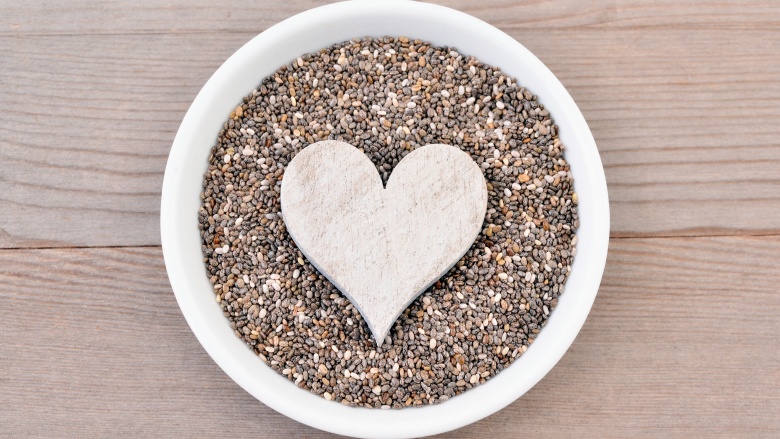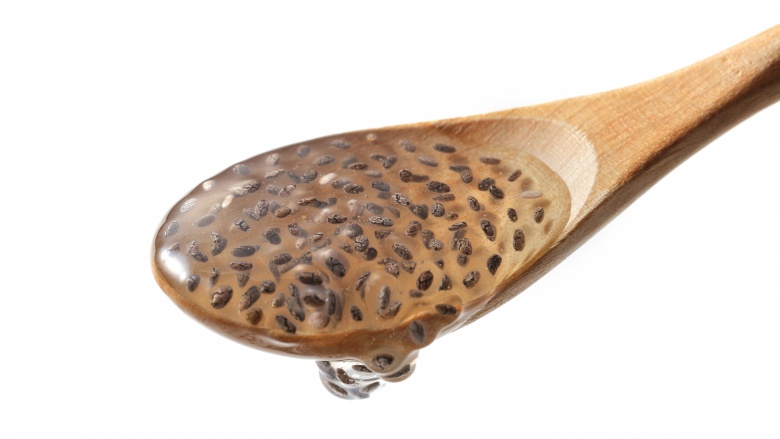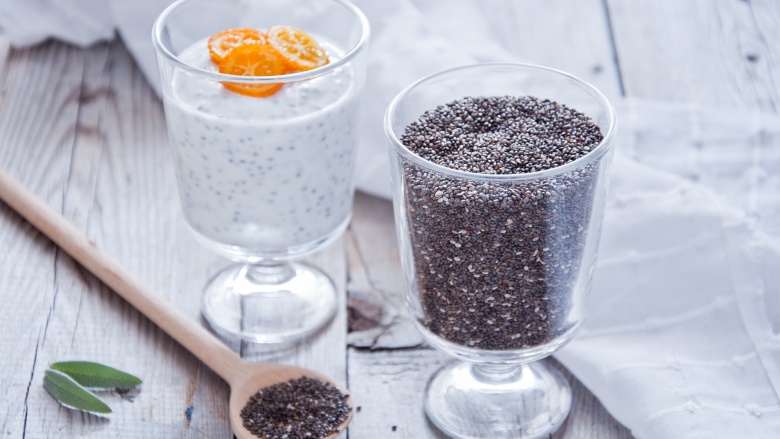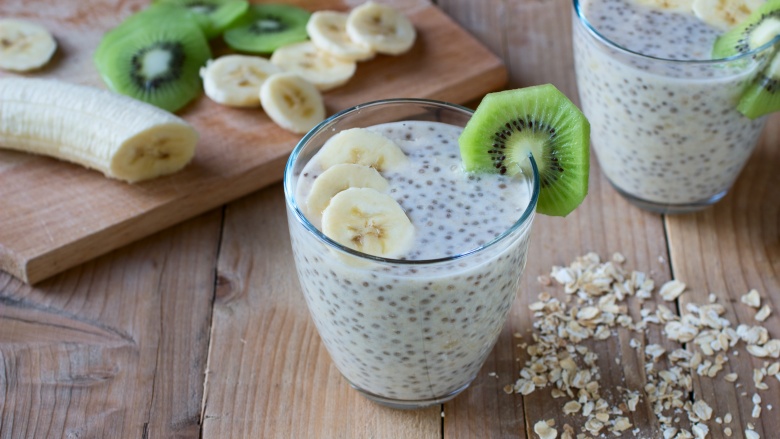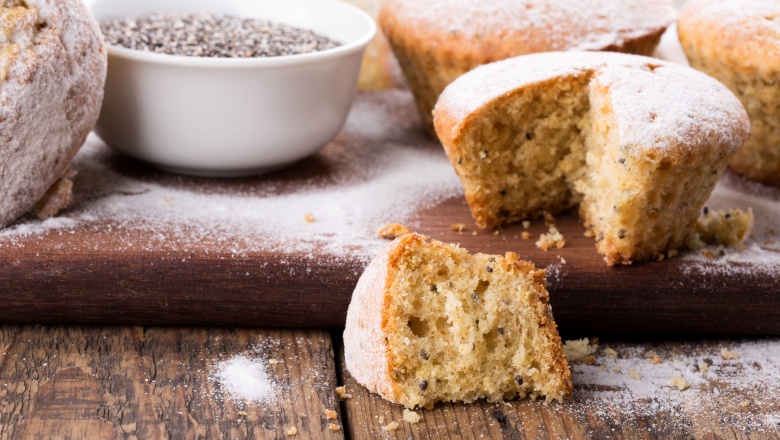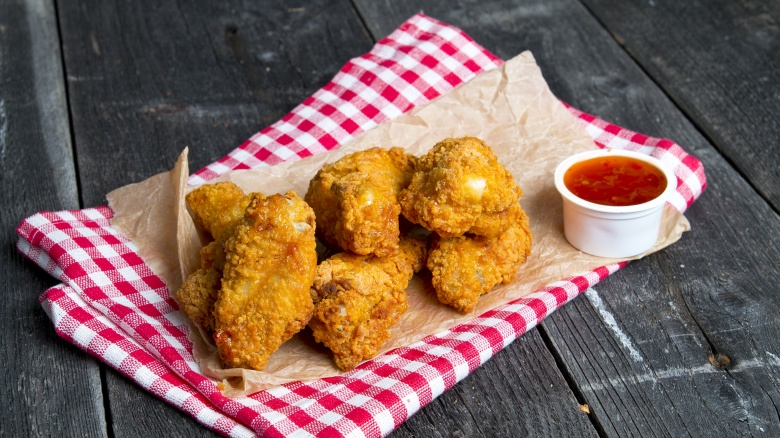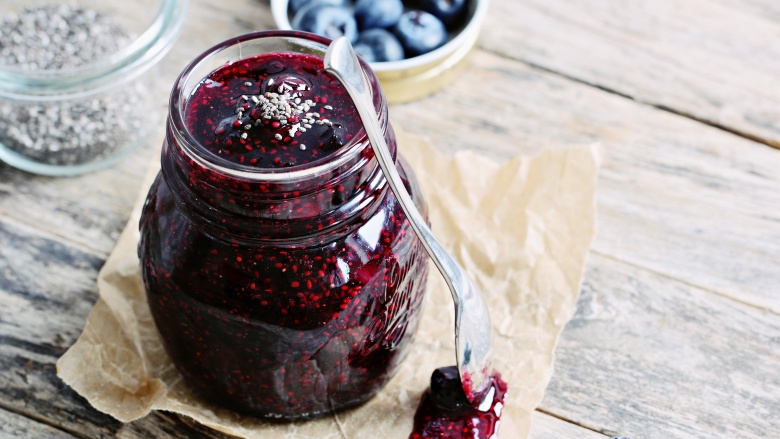You're Probably Eating Chia Seeds Wrong
Ch-ch-ch-chia! Remember those corny commercials for the flowering plants that grew right before your eyes? As you added water, the plants grew and grew, thanks to the chia seeds absorbing all that water. Fortunately for chia seeds, they have moved on from being terracotta pets and are now a darling of the health and wellness community.
Chia seeds have been popular with the health food crowd for years now. It would be impossible to walk through a Whole Foods without coming across whole chia seeds, raw chia pudding, and chia-infused juices. While they are loaded with healthy fats and nutrients, there is actually a wrong way to consume them. In fact, a 39 year-old man actually wound up in the emergency room after eating chia seeds. Read on to make sure you don't make this mistake.
Benefits of chia seeds
Chia seeds are referred to as superfoods because of their nutritional punch. They are a great source of fiber, omega fatty acids, protein, and antioxidants. They may even prevent heart disease and improve blood sugar control. Celebrity nutritionist Lindsey Duncan, ND, CN shared with the Doctor Oz Show the many benefits of chia seeds. "The chia seeds are 'super' because, like a superfruit, they deliver the maximum amount of nutrients with minimum calories," she explained. "They have several of the same benefits as the more well-known 'super seed' flax, but unlike flax seed, you don't need to grind them to reap the health benefits."
The fiber part is especially important for us. According to the American Dietetic Association, we should be consuming 20 to 35 grams of fiber every day, but the average American only takes in about 12 to 15 grams. Because chia seeds contain about 11 grams of fiber per ounce, a serving of these little babies will take care of 42 percent of your daily fiber needs. "Fiber is vital for all aspects of health, and is especially key for weight loss and digestion," said Duncan. "Fiber helps slow digestion and makes you feel fuller by soaking up fluid and expanding in your digestive tract."
Chia seeds also provide our bodies with healthy fats like omega-3 and omega-6 fatty acids. "Everyone needs to consume high amounts of these essential fatty acids in their diet because these EFAs build new cells and regulate various processes of the body, but our bodies cannot make them internally," explained Duncan. "They also support heart health and beautiful skin, hair, and nails."
As if these nutrients aren't enough, chia seeds can even aid in weight loss. Because these seeds absorb up to 27 times their own weight, they can take up some extra room in your stomach, providing a feeling of fullness. While this amount of absorption can be helpful, it's also dangerous if they're consumed dry.
Case study
In a study presented at the American College of Gastroenterology Annual Scientific Meeting (via WBUR), a 39 year-old man ended up in the emergency room after eating a tablespoon of dry chia seeds, then drinking a glass of water. Shortly after taking this, he noticed he was not able to swallow anything, even his own saliva. In the emergency room, doctors performed an endoscopy to see what, if anything, was causing the issue. They found a mass of congealed chia seeds completely obstructing the man's esophagus.
It should be noted that this man had a history of dysphagia, which is a feeling of being unable to swallow or food being stuck in the throat.
How did this happen?
While a tablespoon of dry chia seeds looks like such a small amount, we have to remember that they expand quickly. As soon as they mixed with water, the seeds formed a thick, gel-like ball and got stuck. "It got to be this sort of almost Play-Doh-like consistency, very hard in terms of a liquid but also sort of soft," explained Dr. Rebecca Rawl, MD, the gastroenterology fellow at Carolinas HealthCare System who presented the study of a 39-year-old man with chia seeds obstructing his esophagus.
Physicians tried to dislodge the chia seed ball, but it wouldn't budge. They eventually used a small endoscope usually used in babies to chip away at the mass. Rawl explained to Time that the process was quite labor-intensive.
How to eat chia seeds safely
While this was an usual case, Dr. Rawl cautioned against ever eating chia seeds dry. "Patients should never consume dry chia seeds," explained Rawl. "They can absorb many times their weight in water and expand and may become lodged in a patient's esophagus, especially if there is a history of swallowing problems." Because chia seeds will expand to up to 27 times their weight, make sure to add liquid to them before consuming them. After they have already expanded, they are safe to eat and will easily be digested. "Generally, vegetative matter and seeds at least can get broken down and slide through," Rawl said. "The popularity of chia seeds is growing, and I think this will come up more frequently." If you have any history of swallowing problems, she recommended steering clear of chia seeds for now.
Chia pudding
Now that we know we don't have to raid our cabinets and toss the chia seeds, let's enjoy them. Chia seeds are safe to consume, as long as they can absorb liquid before being swallowed. One way to do this is to make your own chia pudding. Because chia seeds absorb liquid so quickly, chia pudding takes only minutes to make. It has a nice creamy texture, so is perfect for those poor people avoiding dairy. It's a great alternative to traditional pudding or yogurt.
Katie from Wellness Mama mixes half a cup of chia seeds with two cups of coconut milk, vanilla extract, and maple syrup. Then she simply blends them up for a minute or two. Dana from the Minimalist Baker prefers to let hers sit overnight. Dana makes chocolate pudding from chia seeds, almond milk, cocoa powder, maple syrup, cinnamon, and salt. After sitting in the refrigerator overnight, you'll have a creamy pudding waiting for you. Chia seed pudding can be topped with chopped nuts, berries, granola, or even a few chocolate chips.
Bake with them
Baking with dry chia seeds is safe because they will absorb liquid as they bake. They really don't add much taste to your dish, so toss a few in next time you're whipping up a batch of cookies or homemade bread. They are also a great addition to baked granola bars. McKel Hill, MS, RD from Nutrition Stripped actually uses chia seeds in her cauliflower pizza crust. She likes to fortify it with ground chia seeds for an extra nutritional punch. Emma from A Beautiful Mess mixes chia seeds in with the flour when making her lemon and chia seed pull-apart bread.
Use them as a breading
One of the reasons I love food blogs so much is because of how creative the recipes are. Only some serious food bloggers would have thought to add chia seeds to their breaded recipes. Dry chia seeds can add a nutritious crunch to baked poultry or fish. Lauren from Lauren Kelly Nutrition uses chia seeds in her gluten-free chicken nuggets. "I make a bunch of these at once and freeze them to take out and reheat for a quick weeknight meal," she shares on her blog. "The kiddies have no clue that they are eating tons of fiber, antioxidants, protein, and omega-3 fatty acids."
Dry chia seeds are mixed with cornmeal and spices in a cornmeal and chia seed crusted tilapia from Savor the Thyme. The tilapia is brushed with mayonnaise, then coated in the chia seed breading before being baked.
Chia jam
Remember how chia seeds expand almost the moment they come in contact with liquid? Well, that property is incredibly helpful when making jam. Making homemade jam on the stovetop is pretty time and labor-intensive. I have burned by arms a few times from fiery bursts of liquid jam bubbling up as I cook it on the stove, trying to get it to thicken. Chia seeds are a lazy girl's jam solution!
A step-by-step guide from Oh My Veggies recommends combining a pound of fruit (like strawberries), one-fourth cup of maple syrup, and two tablespoons of chia seeds. The best part is that the maple syrup can be left out completely if you'd prefer a less sweet jam. Meanwhile, a magical blueberry vanilla chia seed jam from Oh She Glows follows a similar recipe but adds in some pure vanilla extract as well. "You won't believe your eyes how thick this gets," writes food blogger Angela. "Thanks to the chia seeds, we're also pumping up the jam with all kinds of healthy omega fats, iron, fiber, protein, magnesium, and calcium."

